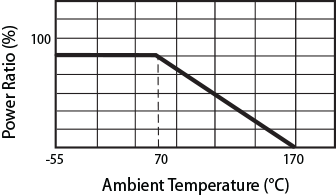What are the standard resistance values?
A resistor is a passive component that reduces the current flow in the circuit and resistance is measured in ohms (Ω). Bourns® fixed resistors typically follow the E24/E24+96 series standard resistor values. The first 2 or 3 digits are derived from the standard value table, while the last digit is the multiplier representing the number of zeros to follow. For some resistors, Bourns utilizes a popular resistance values table. Information about available resistance values can be found on product data sheets or directly from the link below. For customized resistance values please contact a Bourns representative.
► Standard Value Table
What is the resistance tolerance?
Resistance tolerance shows the maximum allowable difference from the nominal resistance value. Most of the resistors Bourns offers are ±1 % and ±5 % tolerance. Precision thin film resistors have a very low tolerance down to ±0.01 %.
What is TCR?
If temperature changes, resistance value can be changed. Temperature Coefficient of Resistance (TCR) shows the maximum allowed relative change of resistance value when the temperature is changed by 1 °C and it is expressed in ppm/°C. TCR is specified on product data sheets.
What is the power rating of a resistor?
Resistors convert electrical power into heat. The rated power is the maximum electrical power that can be safely dissipated through the resistor. If the dissipated power continuously exceeds the resistor’s rated power then the resistor will burn out. The rated power is typically specified at 25 °C room temperature or 70 °C.
What is a derating curve?
If the ambient or resistor’s case temperature increases, then the resistor’s power rating will be significantly decreased. As the derating curve reaches a zero angle, the resistor is not able to dissipate electrical power.
